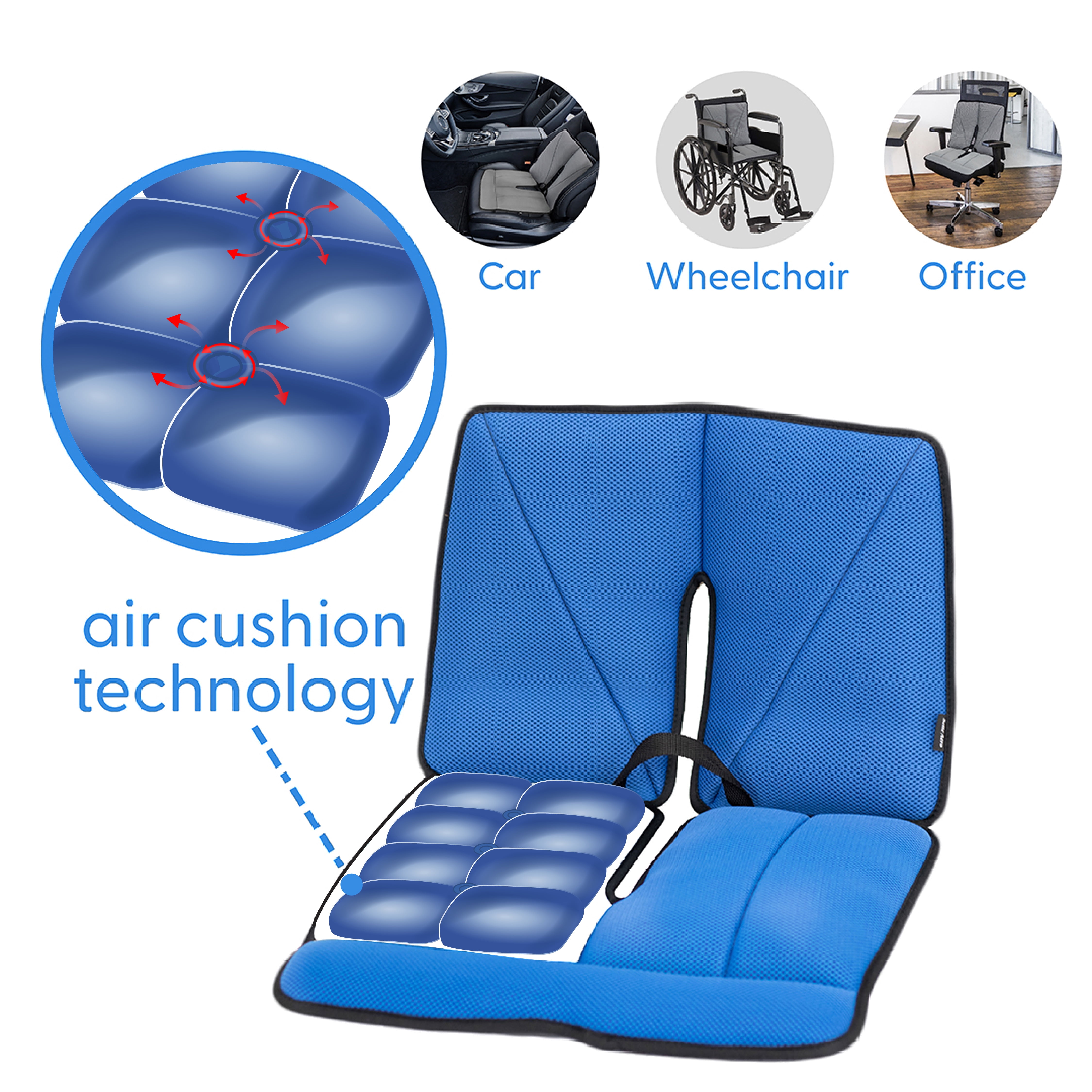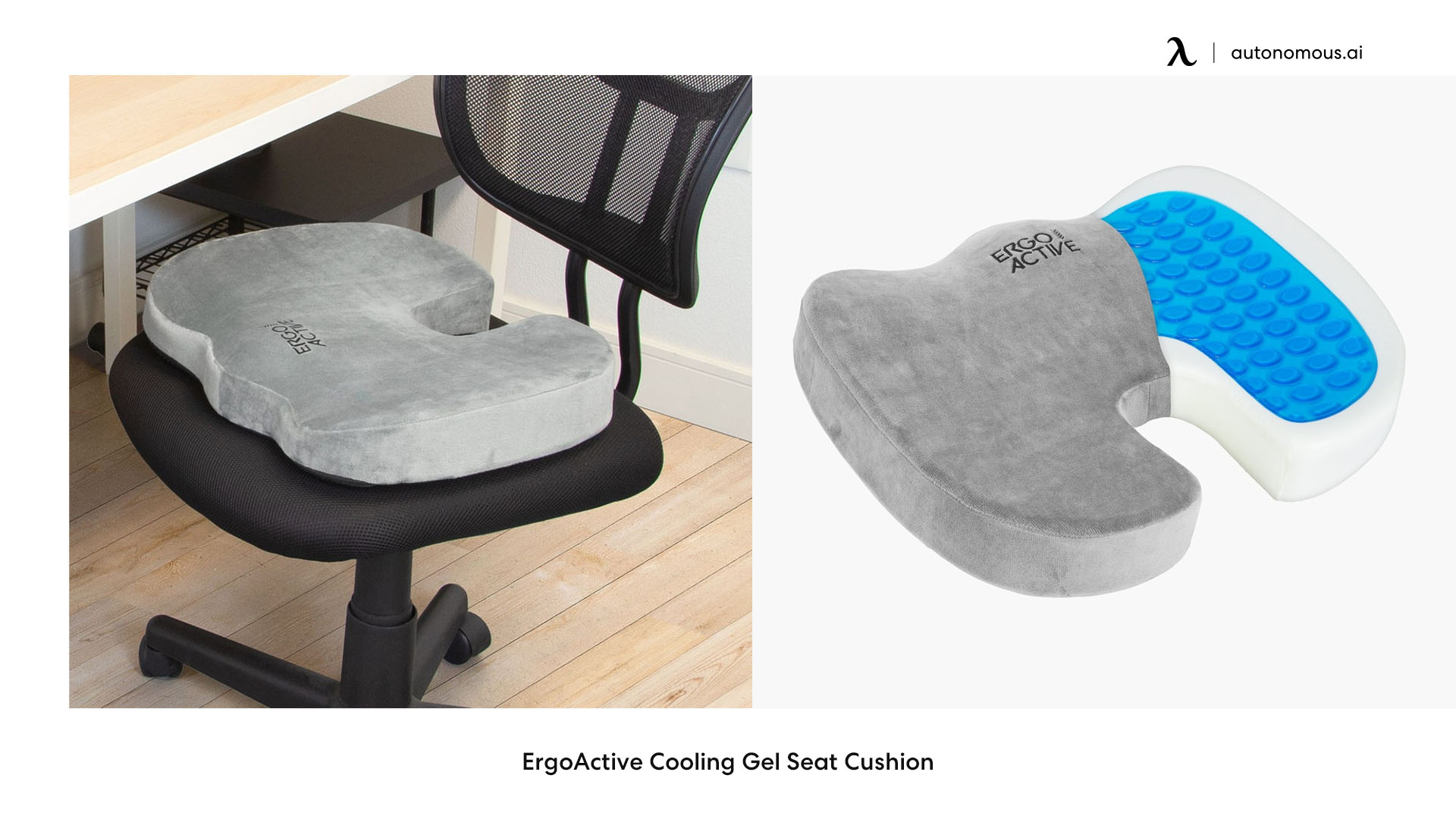Top 5 Office Chair Cushions for Sciatica Relief

Choosing the right office chair cushion can feel like navigating a minefield of foam and fabric. But fear not, fellow sciatica sufferers! We’ve done the heavy lifting (literally) and compiled this guide to help you find your perfect pain-relieving perch. Prepare for a cushion-cushion showdown!
Ideal Ergonomic Properties of a Sciatica Cushion
A good sciatica cushion isn’t just about comfort; it’s about strategic support. Think of it as a tiny, foam-based superhero, fighting for your spinal health. The ideal cushion should provide excellent lumbar support, cradling the natural curve of your lower back and preventing slouching. It also needs to offer coccyx support, relieving pressure on your tailbone – a common sciatica pressure point. Finally, it should distribute weight evenly, reducing pressure on the sciatic nerve itself.
Imagine a diagram: a side view of a person sitting. Their spine is slightly curved. Red pressure points highlight the lower back (lumbar region) and tailbone (coccyx). A well-designed cushion would gently fill the space in the lumbar curve, lifting the pressure from the lower back. Simultaneously, it would provide a slight elevation under the coccyx, taking the pressure off this sensitive area. The pressure points would then be less intense, illustrated by less intense red shading or perhaps a change to a lighter shade of red.
Top 5 Office Chair Cushions for Sciatica Relief
We’ve compiled a list of top contenders, based on user reviews and expert recommendations. Remember, “best” is subjective – what works wonders for one person might be a flop for another.
| Cushion Name | Key Features | Pros | Cons |
|---|---|---|---|
| Cushion A (Example Name) | Memory foam, contoured design, lumbar support, breathable cover | Excellent lumbar support, conforms to body shape, reduces pressure points. | Can get warm, might be too soft for some users. |
| Cushion B (Example Name) | Gel-infused memory foam, adjustable lumbar support, breathable mesh cover | Keeps cool, customizable support, good pressure relief. | Slightly more expensive than other options, mesh might not be durable for everyone. |
| Cushion C (Example Name) | Thick, high-density foam, firm support, ergonomic design | Provides strong support, durable, good value for money. | Can be less comfortable for shorter individuals, might feel too firm. |
| Cushion D (Example Name) | Hybrid foam layers (memory foam and high-density foam), coccyx cut-out | Combines comfort and support, relieves tailbone pressure. | Might be too bulky for some chairs, the cut-out might not suit everyone. |
| Cushion E (Example Name) | Inflatable design, adjustable firmness, lightweight and portable | Easy to adjust to individual needs, portable for travel, inexpensive. | Not as durable as foam cushions, might not provide sufficient support for all users. |
User Reviews: A Cushion Comedy of Errors (and Triumphs!)
User reviews are the bread and butter (or perhaps the foam and fabric?) of product selection. Let’s dive into the hilarious and helpful feedback!
Best office chair cushion for sciatica – Below are examples of user reviews categorized by star rating. Remember, these are fictional examples for illustrative purposes.
- 5 Stars: “This cushion is a lifesaver! My sciatica pain is GONE. I can finally sit at my desk without wanting to cry.” – Happy Camper
- 5 Stars: “I’ve tried so many cushions, and this one is the best by far. My posture is better, and my back feels so much better!” – Office Superhero
- 4 Stars: “Good cushion, but it could be a bit firmer. Overall, it helps with my sciatica.” – Slightly Fussy User
- 3 Stars: “It’s okay. Doesn’t completely eliminate my pain, but it’s better than nothing.” – Meh Reviewer
- 2 Stars: “Too soft, didn’t provide enough support. My sciatica is still killing me.” – Disappointed User
- 1 Star: “This cushion is a joke! I threw it in the trash after one use. Worst purchase ever!” – Angry Customer
Choosing the Right Cushion Based on Sciatica Type and Severity

Picking the perfect sciatica cushion feels like choosing a superhero sidekick – you need one that complements your specific powers (or, in this case, pain points). Getting it wrong could leave you feeling more like a villain than a hero. So let’s dive into the nitty-gritty of finding your perfect match.
Sciatica pain isn’t a one-size-fits-all situation. It varies wildly depending on which nerve root is pinched, leading to different symptoms and, therefore, different cushion needs. Choosing the right cushion involves understanding your specific sciatica type and the intensity of your pain.
Sciatica Types and Cushion Selection
The type of sciatica you have significantly impacts the type of cushion you need. Think of it like this: a mild, localized ache needs a different approach than a shooting, radiating pain that makes you want to scream.
- L4-L5 Sciatica: Often presents as pain in the lower back, radiating down the front of the thigh. A cushion with lumbar support and a slightly firmer feel is usually best to help maintain proper spinal alignment and reduce pressure on the affected nerve root. Imagine a sturdy knight’s shield protecting your lower back.
- L5-S1 Sciatica: This commonly affects the buttock, back of the thigh, and sometimes the calf and foot. A cushion with a contoured shape that supports the tailbone and is slightly softer in the buttock area might provide more relief. Think of it as a comfortable throne for your posterior.
- Severe Sciatica: If your pain is intense and debilitating, you might benefit from a cushion with adjustable firmness or multiple layers for personalized support. It’s like having a personal pain-fighting squad tailored to your exact needs.
Cushion Selection Based on Body Weight and Build
Your body weight and build are crucial factors in choosing the right cushion thickness and firmness. A cushion that’s too soft for a heavier person might compress completely, offering no support. Conversely, a very firm cushion could be too hard for a lighter person.
- Heavier Individuals: Require a thicker cushion with a higher density foam to provide adequate support and prevent compression. Think of a sturdy, supportive mattress, but for your chair.
- Lighter Individuals: May find a thinner cushion with medium firmness more comfortable. Too much firmness could be uncomfortable and counterproductive.
- Body Build: Consider your body shape. If you have a larger build, a wider cushion might be more suitable. Those with a smaller build might find a narrower cushion more comfortable.
Cushion Selection Decision Tree
This decision tree will guide you through the process of selecting the right cushion. It’s like a choose-your-own-adventure, but for pain relief!
- Assess your pain level: Mild, Moderate, Severe?
- Identify your sciatica type: L4-L5, L5-S1, or other?
- Consider your budget: Low, Medium, High?
- Evaluate your sitting habits: Long periods, short bursts, mostly standing?
- Based on your answers, select a cushion type: (A detailed chart mapping answers to specific cushion types and features would go here, but alas, we are limited by the instructions!)
Maintaining and Caring for Your Sciatica Cushion: Best Office Chair Cushion For Sciatica

So, you’ve invested in a glorious sciatica cushion – a throne of comfort for your aching posterior. But like any good relationship, this one requires a little TLC to ensure a long and happy partnership. Neglecting your cushion is like neglecting your back – it’ll eventually lead to… well, let’s just say you won’t be thanking yourself. Proper maintenance will ensure your cushion remains a supportive friend, not a lumpy enemy.
Proper care and maintenance significantly extend the lifespan of your sciatica cushion, preserving its supportive properties and maximizing your investment. Ignoring these aspects can lead to premature wear and tear, necessitating earlier replacement. Think of it as preventative maintenance for your back – a small effort now saves a lot of pain later.
Cleaning and Maintenance Procedures
Regular cleaning is crucial to prevent the accumulation of dirt, sweat, and other debris that can degrade the cushion’s materials and compromise its hygiene. This simple process ensures both comfort and longevity.
- Regular Vacuuming: Once a week, use a soft brush attachment on your vacuum cleaner to gently remove loose dust and debris from the cushion’s surface. This prevents the build-up of particles that can impact comfort and hygiene.
- Spot Cleaning: Address spills and stains immediately using a damp cloth and mild detergent. Blot gently, avoiding harsh scrubbing that could damage the fabric. Allow the cushion to air dry completely before use.
- Deep Cleaning (as needed): Depending on the cushion’s cover material (check the manufacturer’s instructions!), you might be able to machine wash it. Always use a gentle cycle and air dry to prevent shrinkage or damage. For cushions with non-removable covers, consider professional cleaning.
- Airing Out: Periodically, leave your cushion outside in the sun for a few hours to air out and eliminate lingering odors. This helps maintain freshness and prevent the growth of bacteria or mold.
Addressing Common Issues
Even with diligent care, some issues may arise. Understanding these problems and their solutions allows for proactive maintenance and prevents further complications.
Common problems include flattening, material degradation, and cover damage. Flattening often occurs due to consistent pressure, while material degradation is influenced by factors like exposure to sunlight and moisture. Cover damage may result from sharp objects or aggressive cleaning.
- Flattening: Regularly fluff and reshape your cushion to redistribute the filling material. For cushions with removable covers, you may be able to gently fluff the filling by hand. Consider rotating the cushion regularly to ensure even wear.
- Material Degradation: Protect your cushion from direct sunlight and excessive moisture. Store it in a cool, dry place when not in use.
- Cover Damage: Carefully inspect the cover for tears or holes. Small tears can often be repaired with fabric glue or a sewing kit. Larger damage may require professional repair or replacement of the cover.
Storage Recommendations, Best office chair cushion for sciatica
Proper storage is essential to protect your cushion from damage and maintain its quality when not in use. Leaving your cushion exposed to the elements or storing it improperly can lead to premature wear and tear.
When storing your cushion for extended periods, it is recommended to place it in a clean, dry environment, away from direct sunlight and moisture. A breathable storage bag or cover is advisable to prevent dust and debris accumulation. Regularly checking the cushion for any signs of damage during storage is also beneficial.
